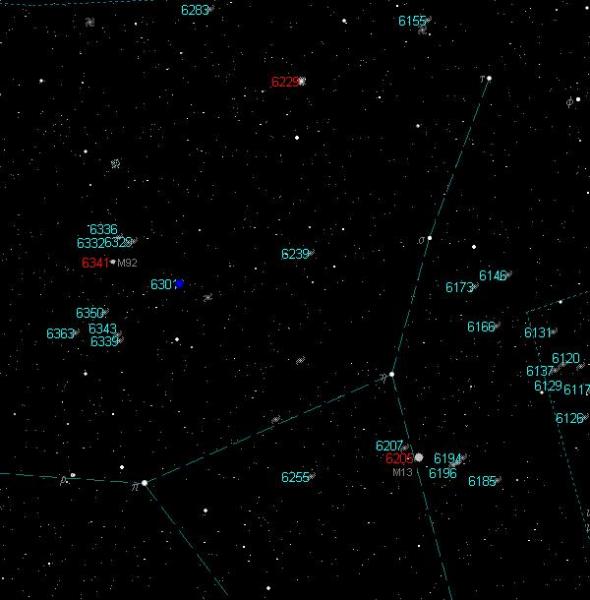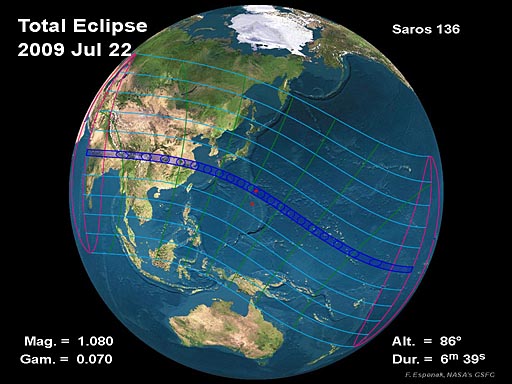The Mighty Hercules
In mythology, Hercules was known for his amazing courage and great strength. It is said this Greek warrior killed a lion with his bare hands. In the night sky, Hercules is the slayer of Hydra and was given an alternative name of Engonasin, meaning "on his knees" or "the Kneeler". To stargazers and astronomers, the asterism of Hercules consists of a dozen stars. However, our celestial strong man lacks significant star brightness and would hard press to identify this asterism from major light-polluted areas. The Kneeler is actually up sided down with his head pointing to the south and looks like a lopsided letter ‘H’. No less than 7 extrasolar planets have been found in this constellation. One of which is HD149026b
Our strong man is the 5th largest constellation in area with 1,225 square degrees. A mere 233 NGC objects are associated with Hercules. The alpha star named Rasalgethi is actually the fifth brightest of the constellation – go figure. It signifies the head of Hercules. Residing around 400 light-years from us, alpha Herculis is a red M5 supergiant in every sense of the word. If we replaced the Sun with Rasalgethi, it would stretch out to the orbit of Mars. Rasalgethi consists of two irregular variables that range from magnitude 3 to 4 and 5 to 7 with contrasting colours of orange-red and bluish green respectively. It must have been at its brightest when it was catalogued as the alpha so long ago.

If double stars are your forte, no less than six others reside within its boundaries. A few, for instance, is 100 Herculis with a couple of identical magnitude 5.9 white-coloured suns and separated by 14 arc seconds. 95 Herculis shows gold and silver components with a 6.3 arc seconds gap between the two. Zeta Herculis is a rapid system with a yellow magnitude 2.9 star along with a red magnitude 5.5 star what rotates in just under 35 years.
If you train your scope on Gamma Herculis, you might pick up a faint companion star less than one arc minute away. This tiny sun is not a true binary but in line of sight only. By saying that astronomers have identified a true companion that is extremely close to Gamma and cannot be seen from our back yards. The nature of this companion is not known but what is known is that its orbit is only 11.9 days.
For me, Hercules spells warm, bug-ridden, summer nights. We also enter into globular cluster season. One of the greatest of the 154 globulars that live in the Milky Way Galaxy seen from Canada is nestled within the Keystone of Hercules. We know it as M13 and it is a must-see on any and every clear night. All telescopes will show individual stars but medium-sized scopes can resolve the cluster to its core. Under dark skies away from major cities and light sources, M13 literally appears like diamonds on black velvet. An estimated one million stars lie in the mega-complex. At 22,000 lights years, M13 still glows at magnitude 5.9 and can be spotted naked eye when observing conditions allow.

Located half a moon width to the east is a spiral galaxy NGC 6207. At three arc minutes in length, it glows at a reasonable magnitude 11.6. NGC 6207 is some 30 million light-years away but is nothing compared to the next object. IC4617 will be a visual challenge for sure. This remote galaxy appears halfway between M13 and NGC 6207 and a little north of the line. Try to find a crooked rectangular box, something like Lyra. IC4617 is just to the west of that asterism. By the way, this 15.5 magnitude smudge is estimated to be 500 million light-years away. This is the farthest galaxy I have seen.
Moving north of the Keystone we come to M92. Although it does not outdo M13, this one is still one to snag in the eyepiece. M92 measures one-third the size of the full moon of eleven arc minutes and at magnitude 6.5, is just above the naked eye threshold. Try to spot is on those rare transparent nights. M92 is about 25,000 light-years from us.
Peppered around M92 are eight galaxies in the 13th and 14th magnitude range. Of these distant islands of stars, NGC 6339 would be an interesting choice. A bright bar down the middle gives it character but in long exposures, other details spring into view. NGC 6339 is listed at magnitude 13.4. Also, be sure to stop by NGC 6301. This spiral shows nice detail in its arms. However, due to its 14th magnitude glow – large scopes will be required to observe the detail visually. For a change of pace, locate NGC 6210. This planetary is an unusual looking object with a chaotic structure. Take a look to see what I mean.

For the next 5 years till February 2014 when Jupiter will be highest on the ecliptic, the sights should get even better. To plan and follow all upcoming of Jupiter’s moons crossing the disk or emerging from behind, turn to page 239 of the 2009 RASC Observer’s Handbook. These transits are something to see as the shadow of a particular Jovian moon is cast on the planet’s cloudy atmosphere.
Jupiter began its retrograde (western motion against the stars) on June 15th and will continue till it reached opposition on August 14th. Last month, the king of planets swung .4 degrees south of Neptune on June 25th and will repeat this alignment again on July 13th. The last of the trio of passes will occur on Dec 22nd when a 15% crescent Moon will add to the portrait. In July, Jupiter is a full ten degrees higher in declination. Now with a little less of Earth’s atmospheric turbulence, cleaner images and observations should prevail.
The clock is now ticking will we bid farewell to the planet Saturn. The ringed planet is sinking in western skies and will disappear into the solar glare a couple of months from now. Although the actual night of the ring crossing when Saturn’s rings line up perfectly with Earth and vanish for one night is September 4th. On that date, the Sun will be a mere eleven degrees away. Now is the last time to get those final peeks.
Venus still dazzles the morning skies In July. For a great Kodak moment, be sure to set your alarms clocks early Saturday morning the 18th before twilight begins to catch the Pleiades, Mars, the Hyades cluster, a thin 19% waning crescent moon and Venus in the same area of sky.
This month’s new moon occurs on July 21st and is also the key player in the Total Solar Eclipse on the 22nd in China. By coincidence, the moon’s closest approach to Earth will be on the 21st at a distance of 357,463 km yielding very high tides. The full Thunder Moon occurs on July 7th to which a penumbral eclipse. Don’t wait for any kind of shadows and colour change as associated with an umbral eclipse. The penumbra is the outer zone of darkness. The magnitude change in brightness will only be 0.156 of a magnitude. Our eye will not see the change but try taking photos before and after and compare. The event peaks at 9:21 Universal Time so the west coast might take advantage of this photo experiment.

The only semi-decent meteor show is the South Delta Aquarids that range from July 12th to August 19th and will peak on July 22nd. The good thing about peak night is the moon will now interfere. On the other hand, its rates are only 20 meteors per hour. But this will be good practice for the Perseids on August 12th.
With the ongoing leak problems the Space Shuttle Endeavour has been experiencing, the next mission STS-127 is scheduled no earlier than July 11th. Canada’s mission specialist Julie Payette will be making her second trip to space and when the Shuttle and Space Station link up, it will mark the first time two Canadian astronauts will meet on the Station. Robert Thirsk is now aboard the station and will remain there for another four to five months. Follow the pre-launch interviews leading up to launch on NASA TV.
Till next month, clear skies everyone.
